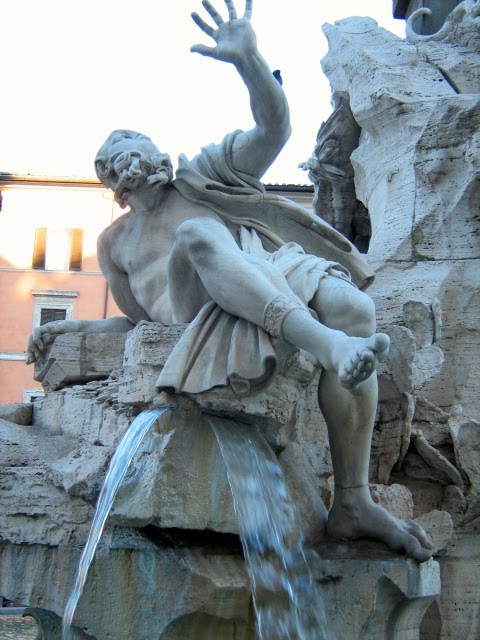Centuries ago, possibly during the lifetime of Renaissance master
painter Piero della Francesco, the Tuscan town of Sansepolcro was
actually a part of northern Umbria and today it is still quite
easy to visit from the Umbrian capital of Perugia.
I just spent a week in Perugia, presenting the Italian version of my novel The Virgin and
the Griffin at a couple of great events. And
while I spent some time visiting favourite spots from the novel in
the city of Perugia, I also took a day trip up to Sansepolcro for a
little research and inspiration for my new novel which is well
underway.
As you might guess, Piero della Francesco (let's call him PdF) and
Sansepolcro feature strongly in the new novel which I have not yet
named and since the first draft is more than half complete, I had
better find a title soon.
Although I have visited Sansepolcro several times, it was always
by car so this trip was a bit of a test of the Umbrian
railway, the F.C.U. (I think that is the most hilarious and aptly
named railway I have ever seen, although that may be just my
adolescent sense of humor).
For a mere 5 euros, I was able to have a very leisurely tour of tiny
towns through northern Umbria and into Tuscany on the slowest,
smallest railway – just two carriages – that I have ever used.
But it was on time and featured air conditioning, so no complaints
here!
Although Sansepolcro is the cherished hometown of PdF, who
returned there frequently, kept a large house and maintained the
family's leather businesses as well as involvement in local
government, the modern community doesn't boast many PdF sites for
visitors.
You can see the palazzo that was his home and today, hosts a PdF
foundation for researchers but is not open to the public. (Word of
warning, his home is not located on the street that bears the name of
Piero della Francesco as I learned after prowling up and down the
quiet strada trying to find my hero's historic house).
Along the way, I found this beautiful little shrine on the corner of a building, with intriguing twinkly electric lights, possibly for use at Christmas or another festive occasion.
The Duomo also boasts some pretty if faded frescos by other Tuscan masters of the day, this cycle focusing on San Benedict.
The Museo Civico, which was at one time Sansepolcro's town hall, owns a large and beautiful PdF altarpiece with numerous panels, and one of the artist's greatest masterpieces, The Resurrection (the top photo on this page).
This fresco of the Risen Christ, one foot planted on the edge of his tomb as sleeping guards snore through the entire historic event, is not only my favourite but is widely viewed as a masterpiece of the Renaissance for its dramatic perfection. And, happily for Sansepolcro, as a fresco painted into a wall of the town hall, it has stayed where Piero placed it – unlike so much of his work which is spread around the world.
That includes another very beautiful altarpiece in the spectacular
and under-rated National Gallery of Umbria in Perugia.
Speaking of Perugia, the presentation of my novel went extremely
well, I thought, because so many of the people who inspired me to
write The Virgin and the Griffin were there – and because I didn't
screw up my remarks made in Italian.
I used those same remarks at a community event a few days later in
a different area of Perugia. That event was enormous fun; in part,
because the opening act was a fantastic dog agility demonstration.
Border collies dominated, although a collie, a terrier mix, and I
think German shepherd also leapt in. They were all so excited,
wiggling and squirming as they waited their turn to show how they
could keep a herd of sheep in order, given a chance. (Dogs not exactly as shown above!)


























































